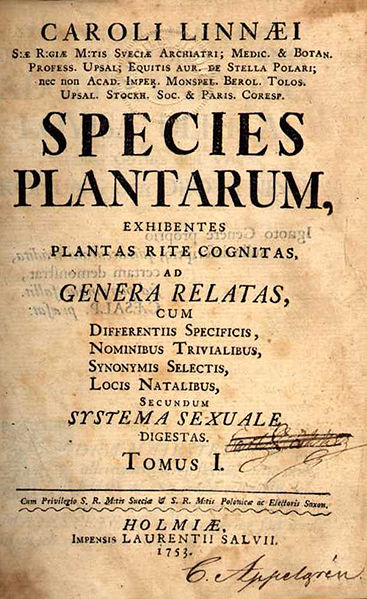Linnaean taxonomy can mean either of two related concepts:The particular form of biological classification (taxonomy) set up by Carl Linnaeus, as set forth in his Systema Naturae (1735) and subsequent works. In the taxonomy of Linnaeus there are three kingdoms, divided into classes, and the classes divided into lower ranks in a hierarchical order.
A term for rank-based classification of organisms, in general. That is, taxonomy in the traditional sense of the word: rank-based scientific classification. This term is especially used as opposed to cladistic systematics, which groups organisms into clades. It is attributed to Linnaeus, although he neither invented the concept of ranked classification nor gave it its present form. In fact, it does not have an exact present form, as "Linnaean taxonomy" as such does not really exist: it is a collective (abstracting) term for what actually are several separate fields, which use similar approaches.
The title page of Systema Naturae, Leiden (1735)
Key to the Sexual System (from the 10th, 1758, edition of the Systema Naturae)
Kalmia is classified according to Linnaeus' sexual system in class Decandria, order Monogyna, because it has 10 stamens and one pistil
Species Plantarum is a book by Carl Linnaeus, originally published in 1753, which lists every species of plant known at the time, classified into genera. It is the first work to consistently apply binomial names and was the starting point for the naming of plants.
Cover page of first edition
Before Species Plantarum, this plant was referred to as "Plantago foliis ovato-lanceolatis pubescentibus, spica cylindrica, scapo tereti"; Linnaeus renamed it Plantago media.





